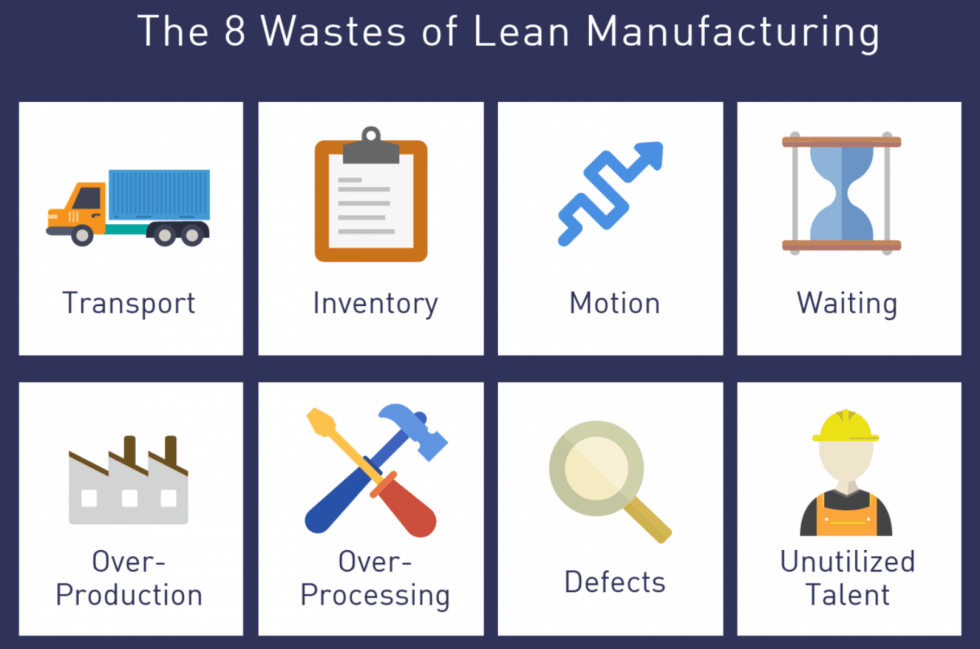The 8 wastes of LEAN
Transportation * Every time a product is touched or moved unnecessarily there is a risk that it could be damaged, lost, delayed, etc. as well as being a cost for no added value. Transportation does not add value to the product, i.e. is not a transformation for which the consumer is willing to pay.
Inventory * Whether in the form of raw materials, work-in-progress (WIP), or finished goods, represents a capital outlay that cannot yet produce an income. The longer a product sits in one of these states, the more it contributes to waste. The smooth, continuous flow of work through each process ensures excess amounts of inventory are minimized.
Motion * In contrast to transportation, which refers to damage and transaction costs associated with moving the product, motion refers to the damage and costs inflicted on what creates the product. This can include wear and tear for equipment, repetitive strain injuries for workers, or unnecessary downtime.
Waiting * Whenever the product is not in transportation or being processed, it is waiting (typically in a queue). In traditional processes, a large part of an individual product’s life is spent waiting to be worked on.
Over-production * Making more of a product than is required results in several forms of waste, typically caused by production in large batches. The customer’s needs often change over the time it takes to produce a larger batch. Over-production has been described as the worst kind of waste.
Over-processing * Doing more to a product than is required by the end-customer results in it taking longer and costing more to produce. This also includes using components that are more precise, complex, expensive or higher quality than absolutely required.
Defects * Having to discard or rework a product due to earlier defective work or components results in additional cost and delays.
Skills * The waste of human potential = poorly trained staff, allocation of poor tools and resources, not allowing operators to be part of the improvement process and leaving them unchallenged or employees placed in a position which does not make the most of their skills and experience.
